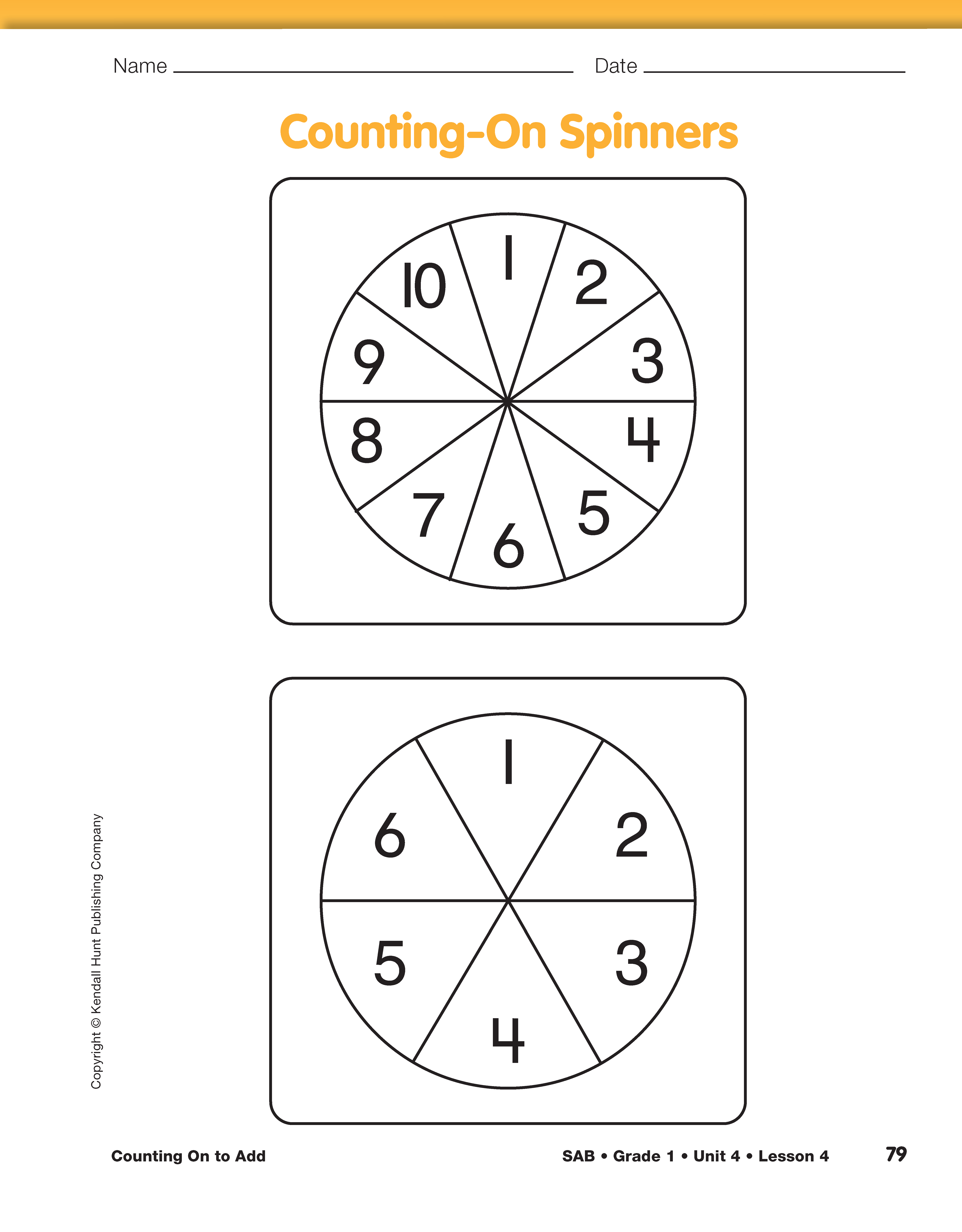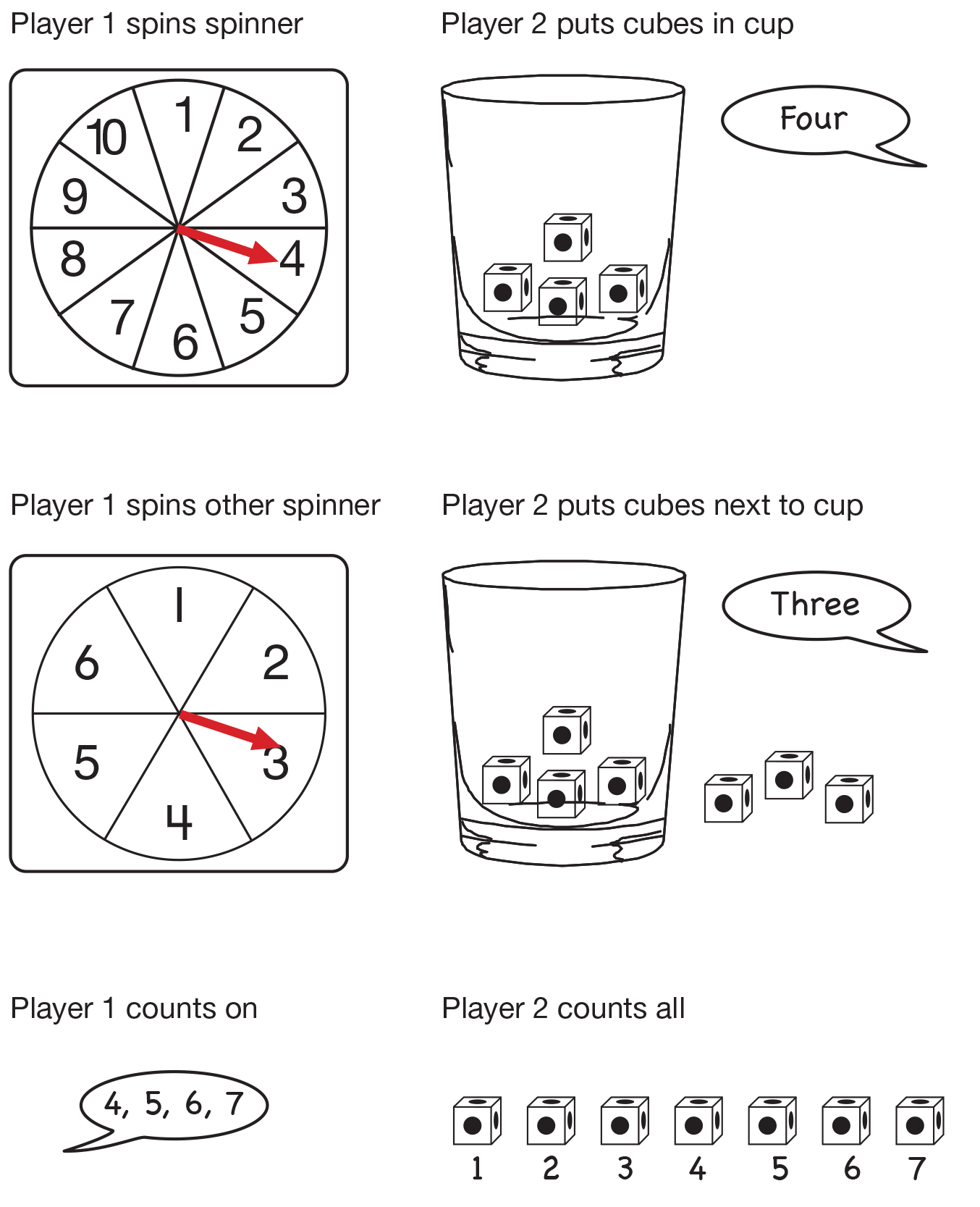Counting On to Add
Est. Class Sessions: 1Developing the Lesson
Part 2: The Counting-On Game
Demonstrate the Game. This is a game for student pairs. Each pair needs connecting cubes, a large plastic cup, a copy of the Counting-On Spinners page, and a clear plastic spinner or a paper clip and a pencil. Ask a student volunteer to help you demonstrate the game. Figure 2 illustrates the steps of the game.
Player 1 spins the first spinner (1–10). Player 2 puts the number of cubes shown on the spinner into the cup and says the number aloud. Player 1 spins the second spinner (1–6). Player 2 sets that number of cubes next to the cup and again says the number aloud. Player 1 uses the counting-on strategy aloud to find the total number of cubes inside and next to the cup. Player 2 checks the total by counting all the cubes in the cup and beside the cup. If Player 1 has given the correct total, he or she scores a point. The two players then trade tasks and now it is Player 2's turn to spin the spinners, determine the total number of cubes, and possibly score a point. Make it clear to students that each player spins two times before it is the other person's turn. Whoever has the most points after five rounds of the game wins.
Play the Game. Have students play five rounds of the game with a partner. As they play, circulate about the room noting students' abilities to use the counting-on strategy to add.
















